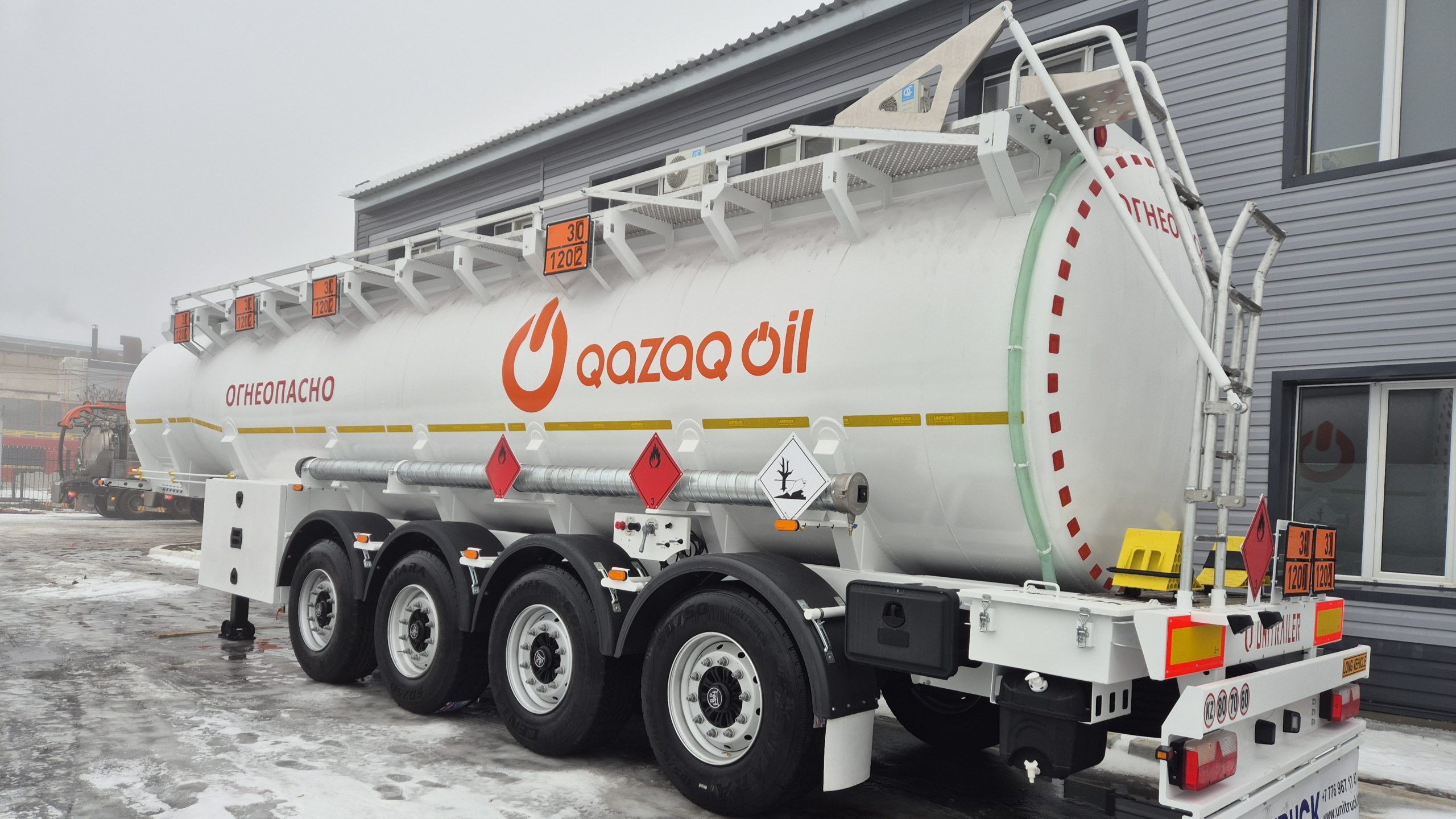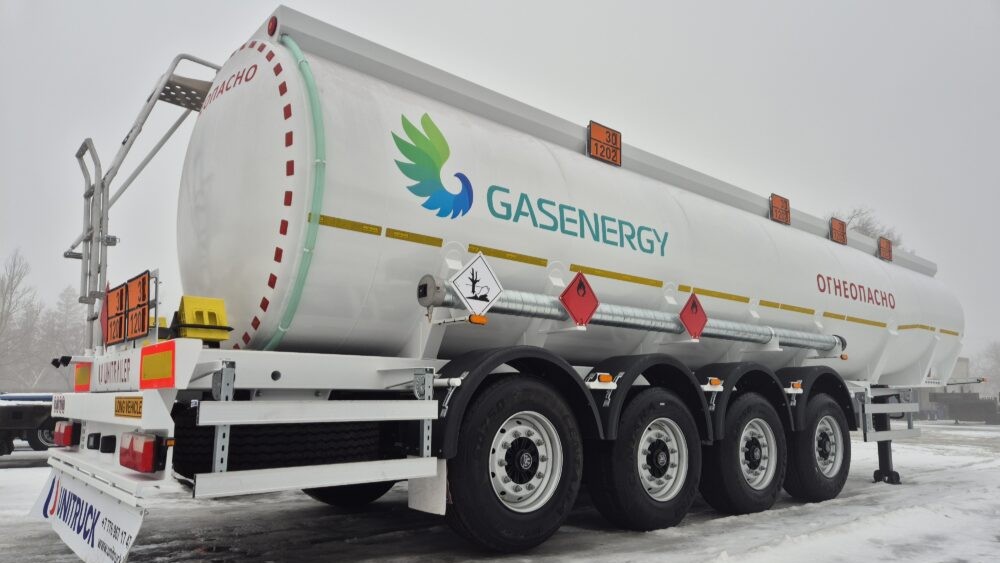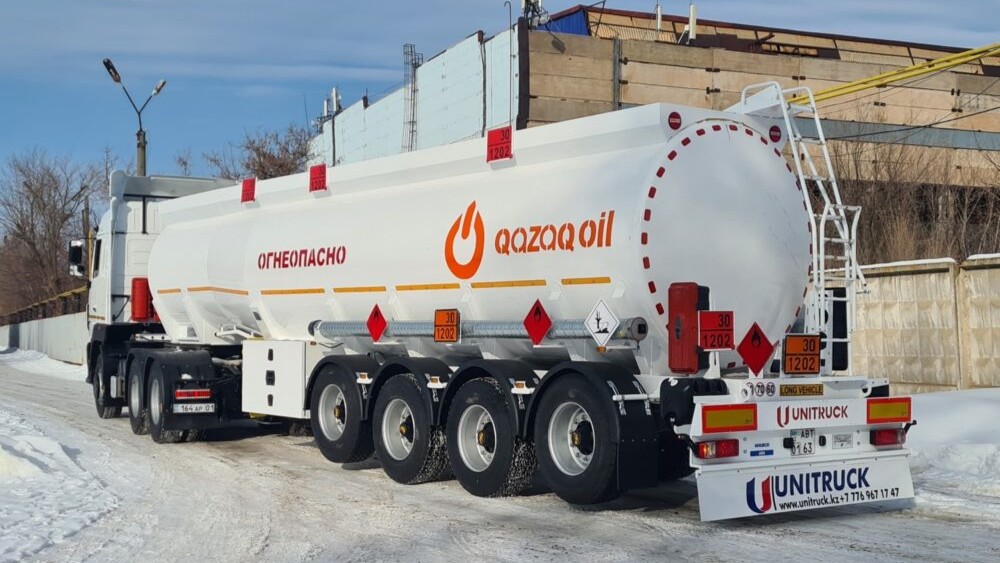




A fuel tanker is used for transporting petroleum products. The operating principle of this specialized vehicle is similar to that of a regular truck. The operational requirements do not differ from those of a standard vehicle. The distinguishing feature of fuel tankers lies in the high fire safety standards, as they are equipped with special functions: refueling ATZ and ATS.
Fuel tankers available on the market include several types:
Some models can refuel other vehicles in the fields, at depots, or at parking sites for special equipment. Buying a fuel tanker is economically beneficial for refueling heavy machinery. Owners of oversized machines will appreciate their use. Such models are especially valuable at remote construction sites and for distant consumers.
UNITRAILER manufactures fuel tankers and high-quality components for sale. Their vehicles stand out for:
A new fuel tanker offers excellent maneuverability, which is crucial for movement in urban conditions. Modern models feature designs that enhance fire safety, while grounding systems prevent spark discharges that can easily cause a fire.
By type of transported fuel, fuel tankers are divided into:
New fuel tankers are suitable for transporting both light and dark petroleum products. Manufacturers recommend separating them by fuel type. The tank should be steamed each time if used for different fuels. Heated semi-trailer fuel tankers are very effective in winter for unloading and transporting oils, fuel oil, and bitumen. A fuel dispenser is considered a vehicle equipped with a discharge pump and a fuel distribution valve.
Special-purpose vehicles are divided by volume into large and small. Fuel tankers are produced with bottom-loading and top-filling systems. The first option poses no environmental hazards. Some vehicles are divided into two sections, with special partitions preventing liquids from mixing. Fuel tankers in Kazakhstan are widely used for transporting different fuels.
When choosing which fuel tanker to buy, it is important to consider compliance with certain requirements:
It is convenient to buy a fuel tanker with warning signs mounted on each tank, informing other road users that hazardous materials are being transported.
On the specialized website artan.kz, you can find out how much a fuel tanker costs in the Republic of Kazakhstan. The company sells its own specialized equipment and also offers custom-made tanks according to customer requirements. In Almaty, you can buy a fuel tanker with leaf-spring or air suspension and with different numbers of compartments. Tanks are produced in several shapes:
The lifting of the tank (priced at the manufacturer’s rate) can be controlled from the driver’s cab or externally using a lifting device on the front axle.
The electrical equipment of the vehicle fully complies with SAE standards and regulations, with turn signals and reverse lights included. It is easy to buy a fuel tanker in Kazakhstan with standard equipment:
Buying a fuel tanker in Kazakhstan is convenient with fast delivery to all cities of the Republic.
It is manufactured in volumes of 20.000-55.000 lt. according to request
2-3-4-5-6 cell dividers
Our tankers are ellipse, round, double “D”, bottle type shaped 4 mm 09G2S plate is used on tanker body
Semi-chassis profile 100x200x6mm
2 - 4 axle shafts with the capacity of 9-12 tons,
are used
- Pneumatic
- Spring balancer
Remote operated elevating system for front axle shaft in cabin
- Tires: 385/65 R22,5
- Rims: 11,75 x 22,5
- It is suitable for SAE standards and Tüv regulations
- Electricity is provided by 7 pin plug from vehicle
- Necessary traffic advisory and stoplights on both sides
- Back lights, brake lights, license plate lamps, trailer reflectors and orange colored warning lights on the sides
Wabco ABS
Wabco EBS
2" DIN 74080 and 3.5" DIN 74083 in steel 42 CRM04. Brand – OMS
Two speed, telescopic, mechanical conveyor legs, with the capacity of 24 tons
Tipper is painted in paint drying oven by Washing + Sanding + 2+1 coat Acrylic Paint
It will be specified according to customer request
It will be specified according to customer request
Multi-piece plastic fenders that covers trailing axle tires
1 plate unloading valve box
1 plate tool box
1 non-slip floor walking platform
1 ladder (climbed from behind)
2 PVC pipes to carry unloading hoses
Control Panel(Mob, air clock, access ramp lever)
Plastic water tank
Roller or basket stare tire conveyor
Aluminum bike impact absorber
Mounting and mounting space
European axle shaft group and all kind of equipments
Aluminum-chrome stainless plate
Bottom load - bottom unload system
Centrifuge
Counter
Double spare tire conveyor with basket
Axle shaft elevator addition
Fire extinguisher closet and fire extinguisher tube
Tire mark according to request
RAL color codes according to request
We are ready to consider manufacturing of any of our equipment in accordance with the Customer’s requirements.
Leave a request, our manager will contact you as soon as possible.
To start cooperation, it is enough to leave an application on our website or by phone. Our manager will contact you shortly to clarify all the details and terms of the order. We guarantee that we approach each request with the utmost care and concern for Our customers.
Our specialists will help you to choose the optimal model of the technique, as well as offer additional options, if necessary. To order a machine, take four simple steps:

A fuel tanker is used to safely transport large volumes of gasoline, diesel, kerosene, or aviation fuel from terminals to retail or industrial locations.
Design features include explosion-proof components, antistatic coatings, fire-resistant valves, and spark prevention systems.
Barrels are typically constructed from aluminum alloys or stainless steel, combining strength with corrosion resistance and reduced weight.
Tanks are internally divided into multiple sealed compartments to carry different fuel types or balance load distribution.
Standard fuel tankers can transport gasoline, diesel, jet fuel, and similar petroleum-based liquids under ADR or DOT classification.
Yes, most tankers are equipped with grounding wires, anti-overfill devices, and vapor recovery systems to prevent ignition hazards.
Fuel is usually loaded through top-mounted hatches and unloaded by bottom discharge valves, often using gravity or onboard pumps.
Drivers must hold certifications such as a HazMat endorsement or ADR license, depending on jurisdiction, to legally operate fuel tankers.
They must display standardized hazard placards, UN numbers, and warning labels clearly visible on all sides of the vehicle.
Fuel tankers are subject to frequent inspections—daily visual checks, monthly maintenance, and annual leak and pressure testing by certified inspectors.
